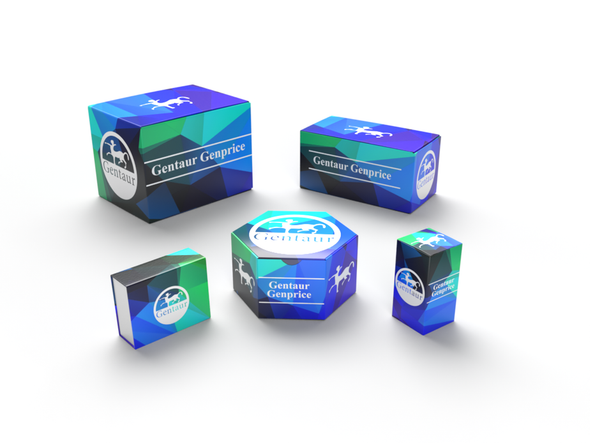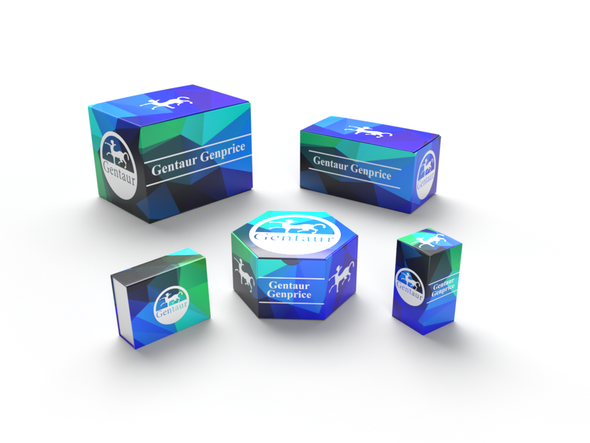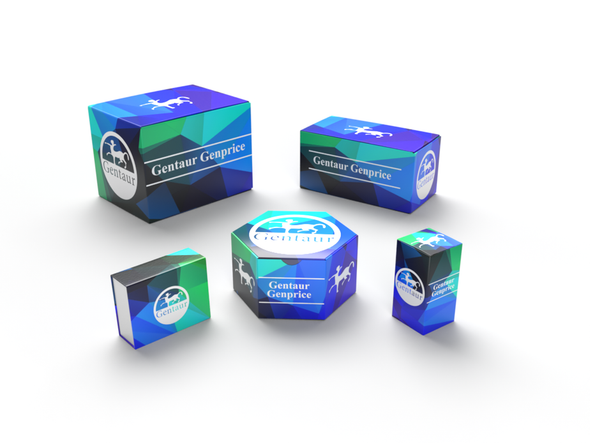749
Mouse Chymotrypsin-like elastase family member 2A (CEL) ELISA Kit | KTE71403
- SKU:
- 749-KTE71403
- Availability:
- Usually ships in 5 working days
Description
Mouse Chymotrypsin-like elastase family member 2A (CEL) ELISA Kit | KTE71403 | Gentaur UK, US & Europe Distribution
Application: This Mouse Chymotrypsin-like elastase family member 2A (CEL) ELISA Kit employs a two-site sandwich ELISA to quantitate CEL in samples. An antibody specific for CEL has been pre-coated onto a microplate. Standards and samples are pipetted into the wells and anyCEL present is bound by the immobilized antibody. After removing any unbound substances, a biotin-conjugated antibody specific for CEL is added to the wells. After washing, Streptavidin conjugated Horseradish Peroxidase (HRP) is added to the wells. Following a wash to remove any unbound avidin-enzyme reagent, a substrate solution is added to the wells and color develops in proportion to the amount of CEL bound in the initial step. The color development is stopped and the intensity of the color is measured.
Detection Method: Colorimetric
Conjugate: N/A
Sample Type: Cell culture supernatants#Serum#Plasma#Other biological fluids
Assay Type: Multiple steps standard sandwich ELISA assay with a working time of 3-5 hours. It depends on the experience of the operation person.
Kit Component: • Mouse Chymotrypsin-like elastase family member 2A microplate
• Mouse Chymotrypsin-like elastase family member 2A standard
• Mouse Chymotrypsin-like elastase family member 2A detect antibody
• Streptavidin-HRP
• Standard diluent
• Assay buffer
• HRP substrate
• Stop solution
• Wash buffer
• Plate covers
Features & Benefits: Mouse Chymotrypsin-like elastase family member 2A (CEL) ELISA Kit has high sensitivity and excellent specificity for detection of Mouse CEL. No significant cross-reactivity or interference between Mouse CEL and analogues was observed.
Calibration Range: Please inquire
Limit Of Detection: Please inquire
Usage Note: • Do not mix components from different kit lots or use reagents beyond the kit expiration date.
• Allow all reagents to warm to room temperature for at least 30 minutes before opening.
• Pre-rinse the pipet tip with reagent, use fresh pipet tips for each sample, standard and reagent to avoid contamination.
• Unused wells must be kept desiccated at 4 °C in the sealed bag provided.
• Mix Thoroughly is very important for the result. It is recommended using low frequency oscillator or slight hand shaking every 10 minutes.
• It is recommended that all samples and standards be assayed in duplicate or triplicate.
Storage Instruction: The unopened kit should be stored at 2 - 8°C. After opening, please store refer to protocols.
Shipping: Gel pack with blue ice.
Precaution The product listed herein is for research use only and is not intended for use in human or clinical diagnosis. Suggested applications of our products are not recommendations to use our products in violation of any patent or as a license. We cannot be responsible for patent infringements or other violations that may occur with the use of this product.
Background: Elastases form a subfamily of serine proteases that hydrolyze many proteins in addition to elastin. Humans have six elastase genes which encode the structurally similar proteins elastase 1, 2, 2A, 2B, 3A, and 3B. Like most of the human elastases, elastase 2A is secreted from the pancreas as a zymogen. In other species, elastase 2A has been shown to preferentially cleave proteins after leucine, methionine, and phenylalanine residues. Clinical literature that describes human elastase 1 activity in the pancreas is actually referring to elastase 2A. The deduced 269-amino acid protein shares 55 to 84% identity with other mammalian elastases and 39% identity with bovine chymotrypsin A. Most homology resides in the N-terminal sequence and in the C-terminal half of the protein.
Alternative Names: CEL; BAL; BSDL; BSSL; CELL; CEase; FAP; FAPP; LIPA; MODY8; bile salt-dependent lipase; oncofetal isoform; bile salt-stimulated carboxyl ester lipase; bile salt-stimulated lipase; bile-salt-activated lipase;
Search name: CEL; BAL; BSDL; BSSL; CELL; CEase; FAP; FAPP; LIPA; MODY8; bile salt-dependent lipase; oncofetal isoform; bile salt-stimulated carboxyl ester lipase; bile salt-stimulated lipase; bile-salt-activated lipase;
Tag: CEL










